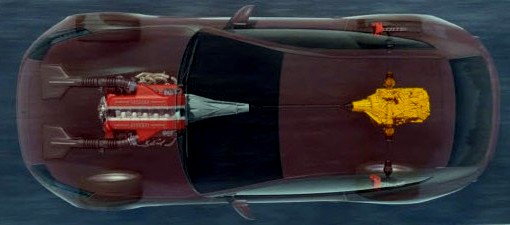| Explanation |
|
A Transaxle is where an automotive transmission and differential are combined into one unit which is then connected to
the axles of the driven wheels. Since it's simply a transmission and differential encased together a transaxle can be basically any type of transmission mentioned on this site. From automatic to manual, from CVT to dual clutch. Transaxles are required when the engine and/or transmission and the driven wheels is in the same area of the vehicle as its most common advantage is to make the drivetrain more compact. The most common example of this would be in front wheel drive cars where the drivetrain (engine, transmission, differential) is practically between the driven wheels. Transaxles are very common especially as front wheel drive cars and their respective platforms make up over 80% of passenger cars on the road so in this case it's a necessity. Where they really become more beneficial than essential is in performance/sport oriented cars where they are used to achieve near perfect front to rear weight distribution. Well known performance cars such as the Chevrolet Corvette and Nissan GTR have transaxles between the rear wheels and the engines situated at the front.  The Ferrari FF's drivetrain layout with the transaxle shown in yellow Even mid engined supercars configure the engine/transaxle placement within the car to achieve above average balance and traction. This is achieved as the weight of the engine (though closer to the rear of the car) is between the front and rear wheels/axles and the transaxle places weight and traction on the rear driven wheels. The transaxle will always have a place in the automotive world as it's a necessity on one hand and its beneficial on the other |
| External Links |
| Detailed Explanations Videos |
|
[?] Subscribe To This Site
|
| Random Topics |
| Other random topics of WhyHighEnd? |




